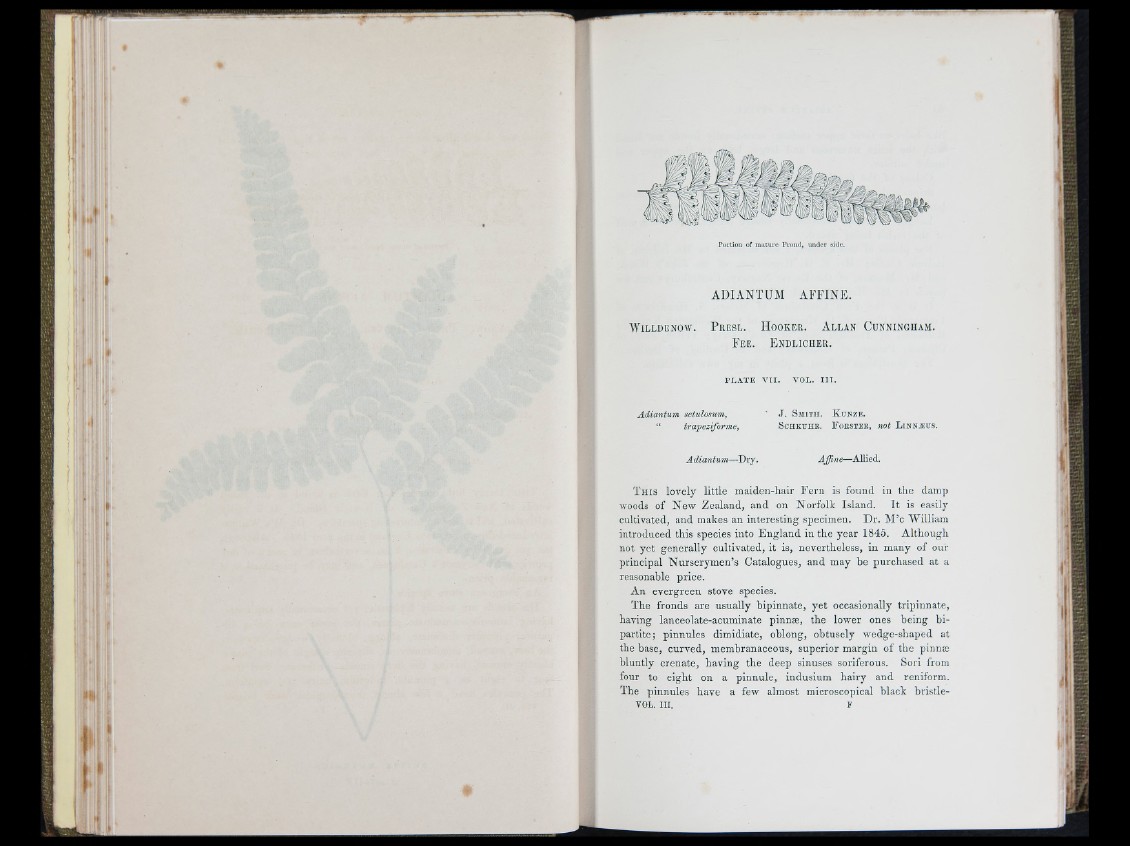
'' l - l f
II :
Portion of mature Fi-oiul, under side.
ADIANTUM AFFINE.
W il l d e n o w . P r e s l . PIo o k e r . A l l a n C u n n in g h am .
F e e . E n d l ic u e r .
I’L.ATE V I I . V O L . I I I .
i -I
Adiantum setulosum,
“ trapeziforme,
J . S s iiT i i . K u n z e .
SciIKUHR. FoiiSTEli, not LlNN^EUS.
A diantum—Dry. AJfne—Allied.
b iiii
13
KM
T his lovely little maiden-hair F e rn is found in the damp
woods of N ew Zealand, and on Norfolk Island. I t is easily
cultivated, and makes an interesting specimen. D r. M ’c William
introduced this species into E n g la n d in the year 1845. Although
not yet generally cultivated, it is, nevertheless, in many of our
principal N u rse rym en ’s Catalogues, and may be purchased at a
reasonable price.
An evergreen stove species.
The fronds are usually hipinnate, y e t occasionally tripinnate,
having lanceolate-acuminate pinnae, the lower ones being b ipartite
; pinnules dimidiate, oblong, obtusely wedge-shaped at
the base, curved, membranaceous, superior margin of the pinnae
bluntly crenate, having the deep sinuses soriferous. Sori from
four to eight on a pinnule, indusium hairy and reniform.
The pinnules have a few almost microscopical black bristle-
TOL. Ill, F
i'i
iii|! i
I